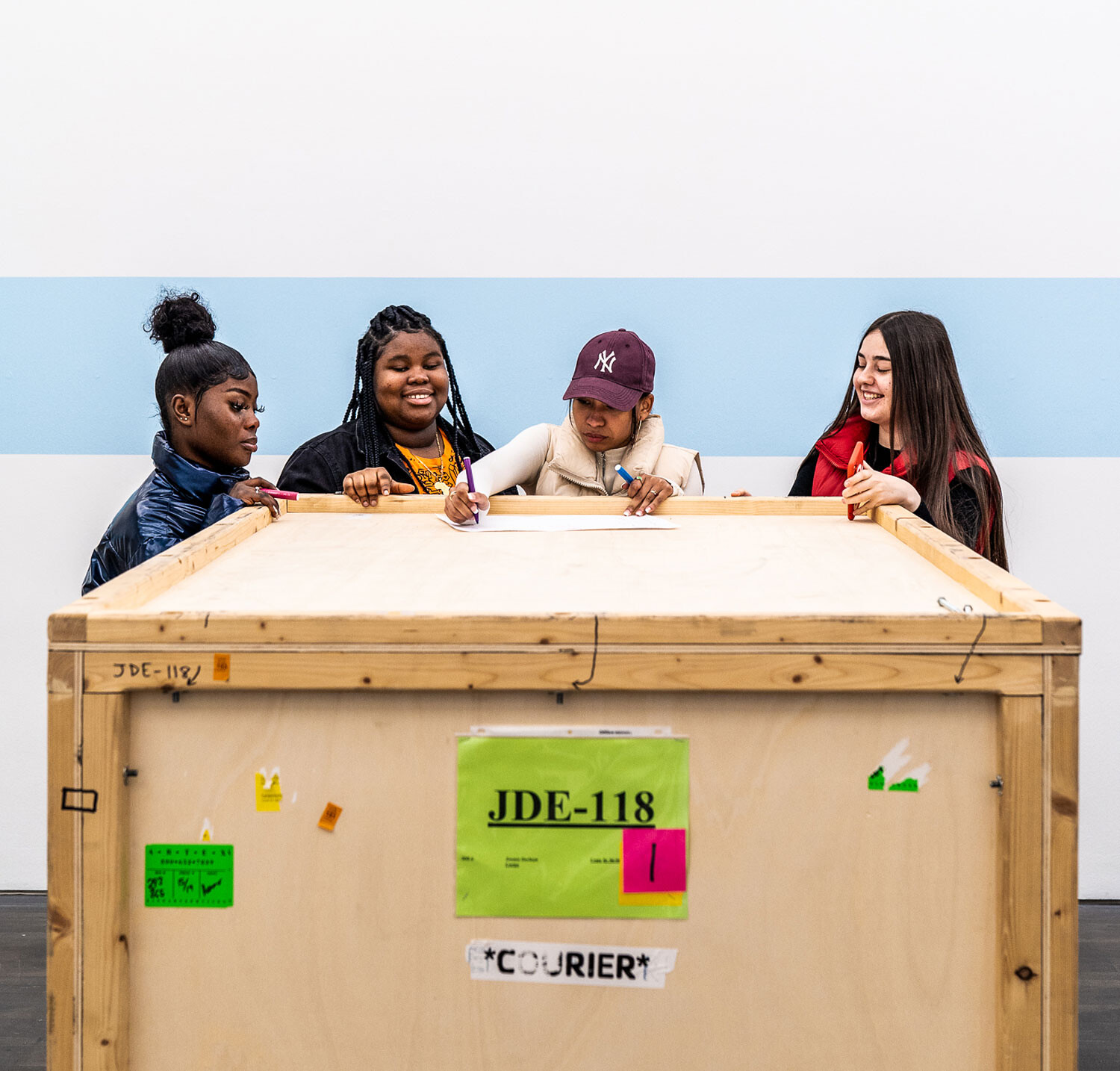Little Catalogue of S.M.A.K.
October 30, 2021–April 17, 2022
Jan Hoetplein 1
9000 Ghent
Belgium
Hours: Tuesday–Friday 9:30am–5:30pm,
Saturday–Sunday 10am–6pm
T +32 9 323 60 01
info@smak.be
With works by Francis Alÿs, Dara Birnbaum, Michaël Borremans, Silvia Gruner, Bruce Nauman, Navin Rawanchaikul, Gilberto Zorio and many others.
As Belgium’s leading contemporary art museum, S.M.A.K. has a reputation for innovative and ground-breaking programming. It organises large-scale retrospectives and thematic exhibitions whilst also devoting space to numerous project-based initiatives. With the prospect of a new museum building on the horizon, S.M.A.K. is re-examining and questioning the core functions of a contemporary art museum in the 21st century. What are the challenges that need to be addressed and how can we unite the different facets of the organisation? One of these questions examines the competing values shift in the relationship between artist, curator, collection and audience.
As part of its research into exhibition-making and public participation, S.M.A.K. has turned its attention to the visitors of the future. The museum staff have taken a step back and pushed all potential biases aside, thereby creating a space that allows for a radical rethink of the curatorial process. An entire floor is dedicated to a presentation entitled The Exhibition. In these galleries, over 400 children, teenagers and young adults shine a brand-new light on the S.M.A.K. collection. What do they make of it? Does the inclusion of major contemporary artworks automatically guarantee the collection’s relevance, both now and in the years to come? Nothing can be taken for granted. The Exhibition shows how young people aged between four and 22 years would present the works of Bruce Nauman and Andy Warhol, for example. Young people have a more spontaneous approach to works of art and do not necessarily take their historical background into consideration. This provides a fresh perspective on the collection and makes for a lively and unpredictable selection: many of the ‘usual suspects’ didn’t even make it onto the walls this time round. In their own words: “The exhibition has to raise more questions when leaving the museum, then when you enter.”
Laboratory & S.M.A.K. Moves
Visitors are also welcome to experiment in the laboratory, a new space in the centre of the exhibition. This dynamic lab chimes with the “S.M.A.K. Moves” philosophy, in which the museum reaches out to groups who rarely or never come into contact with art. S.M.A.K. offers them a space to which they can repeatedly return, where they can reflect and participate in hands-on activities. The Lab is the place where the Academy for Performing Arts holds a weekly improvisation class; where partnering organisation ‘De Batterie’ will unpack the relationship of teenage participants with social media; where foreign language speakers learning Dutch at the Centre for Adult Education take a creative look at words; and where all school classes of various backgrounds will be part of the exhibition. All these trajectories can be followed by the traces left on the project wall. This experiment shows a glimpse of the future and the new museum: tomorrow’s institutions will not only organise exhibitions in different collaborative ways but will facilitate interaction with the public on a permanent basis. This laboratory is the first to extensively explore what this relationship with the public might look like, with authenticity and without compromise.
Art is inevitable in education
S.M.A.K. believes art is crucial to the development of visual literacy and critical thinking in children. Although the image is omnipresent in our society, never has so little attention been paid to the meaningful or critical reading of images. Museums seem to remain the lonely advocates of art as art history disappears from the education curriculum in primary and secondary schools. In any healthy society, art and culture are not intellectual leisure pursuits for the happy few but fundamental to the development of every individual’s ability to think creatively, critically and with curiosity. This is why S.M.A.K. is initiating the debate by questioning the role of education in children’s development. Schools are invited to discover the exhibition, to work, create and leave a mark in the laboratory with all the specially developed tools.


